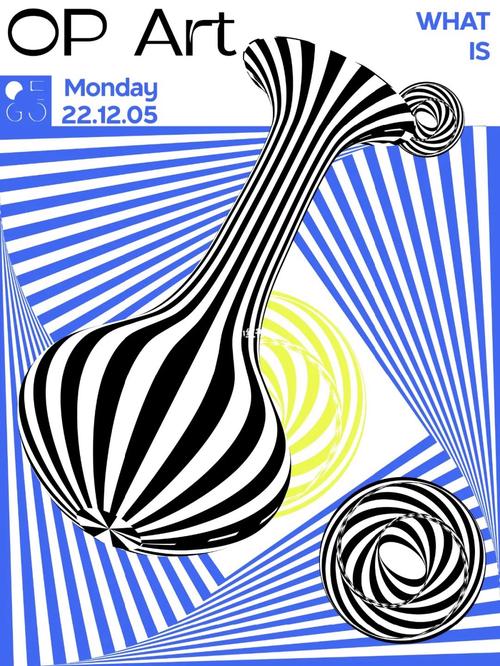
Characteristics of Op Art
Op art, short for optical art, is a genre of abstract art that relies heavily on visual perception and optical illusions. It emerged in the 1960s and has since become a significant part of the art world. If you’re intrigued by the mesmerizing patterns and vibrant colors that seem to move and change before your eyes, this article will delve into the characteristics that define op art.
Color Usage
One of the most striking characteristics of op art is its use of color. Artists like Bridget Riley and Victor Vasarely are known for their bold and contrasting color palettes. These colors are often placed in a way that creates a sense of movement or vibration, making the artwork come alive. The use of color in op art is not just about aesthetics; it’s a tool to manipulate the viewer’s perception.
Here’s a brief table showcasing some popular color combinations used in op art:
| Color Combination | Description |
|---|---|
| Black and White | Contrast creates a sense of depth and movement. |
| Red and Green | Complementary colors that create a dynamic effect. |
| Blue and Yellow | Warm and cool colors that contrast and create a sense of movement. |
Geometric Patterns
Geometric shapes are the backbone of op art. Artists use these shapes to create intricate patterns that seem to shift and change as the viewer moves. The repetition of these shapes can create a sense of rhythm and harmony, while the manipulation of their size, orientation, and spacing can create a sense of movement and depth.
Some common geometric shapes used in op art include:
- Triangles
- Squares
- Circles
- Hexagons
Line and Form
Lines and forms play a crucial role in op art. Artists use lines to create patterns and forms to define space. The use of lines can create a sense of direction and movement, while the forms can create a sense of depth and perspective. The interplay between lines and forms is what gives op art its dynamic and energetic quality.

Optical Illusions
Op art is all about creating optical illusions. Artists use various techniques to trick the viewer’s eyes, making the artwork appear to move, pulse, or even change shape. Some common optical illusions used in op art include:
- Afterimages: When you look at a bright color for a while and then look away, you might see a complementary color in the afterimage.
- Phenomenon of movement: Patterns that seem to move or vibrate.
- Depth perception: Creating the illusion of depth through the use of lines and forms.
Historical Context
Op art emerged in the 1960s as a reaction to the abstract expressionism movement. Artists like Richard Anuszkiewicz, Julian Stanczak, and Mary Ellen Stuart were among the pioneers of this genre. Op art quickly gained popularity and became a significant part of the art world, influencing various other art forms and design disciplines.
Modern Op Art
While op art has been around for over half a century, it continues to evolve and adapt to new trends. Modern op art artists often incorporate digital technology and new materials to create their works. This has allowed them to push the boundaries of the genre and explore new possibilities.
In conclusion, op art is a fascinating genre of abstract art that relies on color, geometric patterns, line, form, and optical illusions to create mesmerizing and dynamic artworks. Its ability to manipulate the viewer’s perception and create a sense of movement and depth has made it a beloved genre among art enthusiasts and collectors alike.

